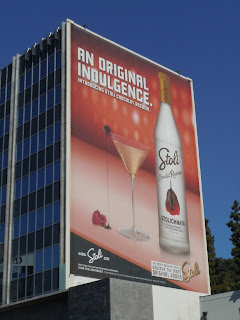In 2004 plaintiff Federal Treasury Enterprise Sojuzplodoimport (FTE) challenged defendant Spirit International B.V.’s (“SPI”) claim of ownership of the various STOLICHNAYA trademarks. In 2006 the district court dismissed almost all claims on a motion to dismiss, holding that the incontestable status of SPI’s registration meant that FTE couldn’t challenge ownership. In 2010 the Court of Appeals for the Second Circuit reversed, holding that it is only after a valid assignment that one succeeds to the rights of the assignor, including incontestability. The appeals court instructed the district court to examine the validity of the assignment to SPI. It didn’t (at least not in this decision), instead dismissing the case based on FTE’s lack of standing.
FTE seemed fairly well-positioned; in 2002 the Russian Federation issued a decree that FTE had the right to use and dispose of (without the right to assign) the STOLICHNAYA trademark in Russia:
FTE also provided another decree from the Russian Federation dated January 6, 2005, stating that FTE was to “represent the interests of the Russian Federation in the courts on matters of recovery and protection of the rights of the Russian Federation to the trademarks for alcoholic products abroad” and “realize registration of the rights of the Russian Federation to the mentioned trademarks abroad.”
FTE asserted that this grant from the Russian government was adequate to give it standing to assert a trademark infringement claim under Section 32 of the Lanham Act.
The court disagreed. Only a registrant or its “legal representative” may bring a claim under § 32. FTE argued it was the Russian Federation’s legal representative, but the court interpreted “legal representative” narrowly:
FTE also argued that the Russian Federation had assigned the trademarks to it, but this also did not convince the court. FTE’s complaint repeatedly said that the Russian Federation owned the trademark, FTE had no assignment in writing, and it didn’t have exclusive enough rights to be considered an owner, so it was not an assignee. The court therefore dismissed the case.
I am utterly confused by this decision. First, I don’t understand why the court entertained a § 32 argument any further than “FTE isn’t a registrant.” I couldn’t find any application or registration owned by FTE or Russia, so I’m not sure why, even assuming FTE was the Russian Federation’s agent or assignee, either would have had standing as “registrant” under § 32.
Second, why is there no argument under § 43(a)? As explained in this post, one doesn’t have to be a trademark owner to bring a claim under § 43(a), just “likely to be damaged.” But there was no § 43(a) count. Perhaps it was because FTE isn’t actually selling anything in the U.S., so FTE had no claim that SPI’s use was likely to cause confusion with FTE’s (non-existent) use.
Finally, is this a Lanham Act case at all? There’s no mention of how SPI came to own the trademark registrations for STOLICHNAYA in the decision, but the Third Amended Complaint tells quite a story about what the plaintiff claims is the theft of the mark in Russia and efforts to recapture it. Is this really a claim for fraud, to void a contract, or for enforcement of a Russian or Dutch judgment, rather than for trademark infringement?
Federal Treasury Enter. Sojuzplodoimport v. Spirits Int’l B.V., No. 04 CV 08510 (GBD) (S.D.N.Y. Sept. 1, 2011).

The text of this work is licensed under a Creative Commons Attribution-No Derivative Works 3.0 United States License.



